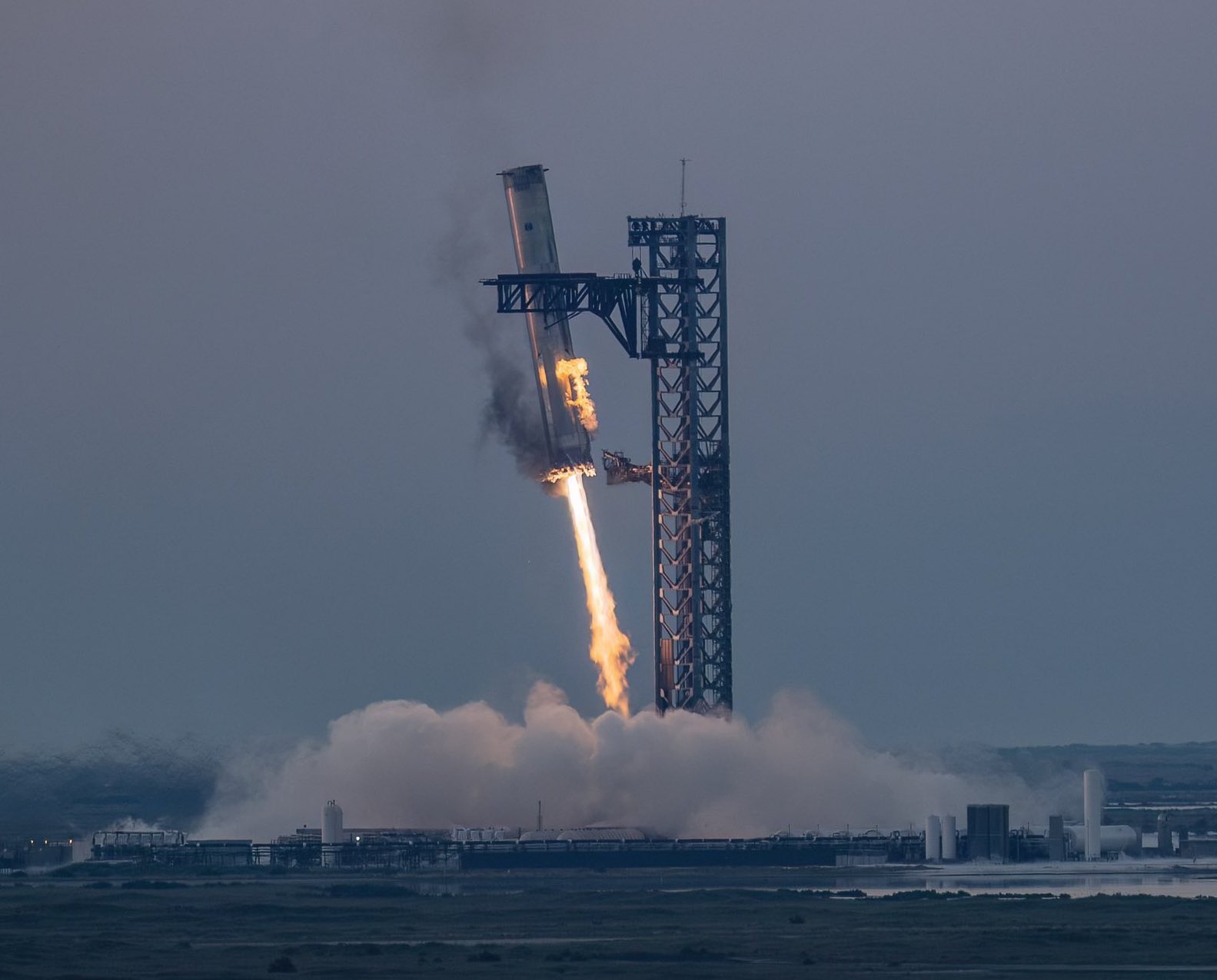Latest News

SpaceX catches the Starship booster in the fifth Starship test on Oct. 13. Photo via Elon Musk/X
SpaceX hit an eye-catching milestone with its Starship test flight on Sunday from Texas, successfully catching the Super Heavy booster in the first attempt to recapture it. SpaceX followed up the mission by launching NASA’s Europa Clipper spacecraft from Florida on a Falcon Heavy rocket on Monday.
The October 13 launch was the first time that SpaceX attempted to catch the Super Heavy booster after launch, ascent, and stage separation. The booster successfully separated and performed a burn to head back to Earth, and coasted into position in the metal arms of the catch tower, to uproarious cheers from SpaceX engineers in the launch broadcast.
In addition, the Starship completed its planned trajectory flight before splashing down in the Indian Ocean. SpaceX did not plan to recover the Starship vehicle. The full mission lasted about 1 hour and 5 minutes.
The Oct. 13 launch was the fifth flight test of Starship, SpaceX’s massive rocket designed to launch up to 150 metric tons in a reusable configuration, which has won contracts to deliver humans to the Moon for NASA. It was the third Starship test this year, following tests in March and June.
The test took place after the Federal Aviation Administration (FAA) granted SpaceX approval on Friday. As of Monday afternoon, the Starship launch had not triggered an FAA mishap investigation.
Europa Clipper’s Mission to Jupiter
SpaceX followed up the Sunday mission from Texas with a Falcon Heavy mission from Florida on Monday, launching a NASA mission to study Jupiter’s Europa moon. This was only the second Falcon Heavy mission of 2024.
The Europa Clipper spacecraft lifted off at 12:06 p.m. ET Oct. 14 from Launch Pad 39A at the Kennedy Space Center. Post-launch, NASA confirmed mission control received full acquisition of signal from the spacecraft.
Europa Clipper is the largest spacecraft NASA has ever built for a planetary mission. The agency said its 100-feet solar arrays could span a basketball court. The spacecraft is now headed on a journey of 1.8 billion miles to Jupiter, looping around Mars and Earth on the way. It is not expected to reach Jupiter’s orbit until April of 2030.
The mission is set to study Jupiter’s icy moon, which scientists say is one of the most promising places to look for habitable conditions beyond Earth because there is evidence it has water, chemistry, and energy. The spacecraft will determine the thickness of Europa’s icy shell and how it interacts with the ocean below, investigate its composition, and characterize its geology.
“We could not be more excited for the incredible and unprecedented science NASA’s Europa Clipper mission will deliver in the generations to come,” Nicky Fox, associate administrator, Science Mission Directorate at NASA Headquarters in Washington said in a release. “Everything in NASA science is interconnected, and Europa Clipper’s scientific discoveries will build upon the legacy that our other missions exploring Jupiter — including Juno, Galileo, and Voyager — created in our search for habitable worlds beyond our home planet.”
Stay connected and get ahead with the leading source of industry intel!
Subscribe Now